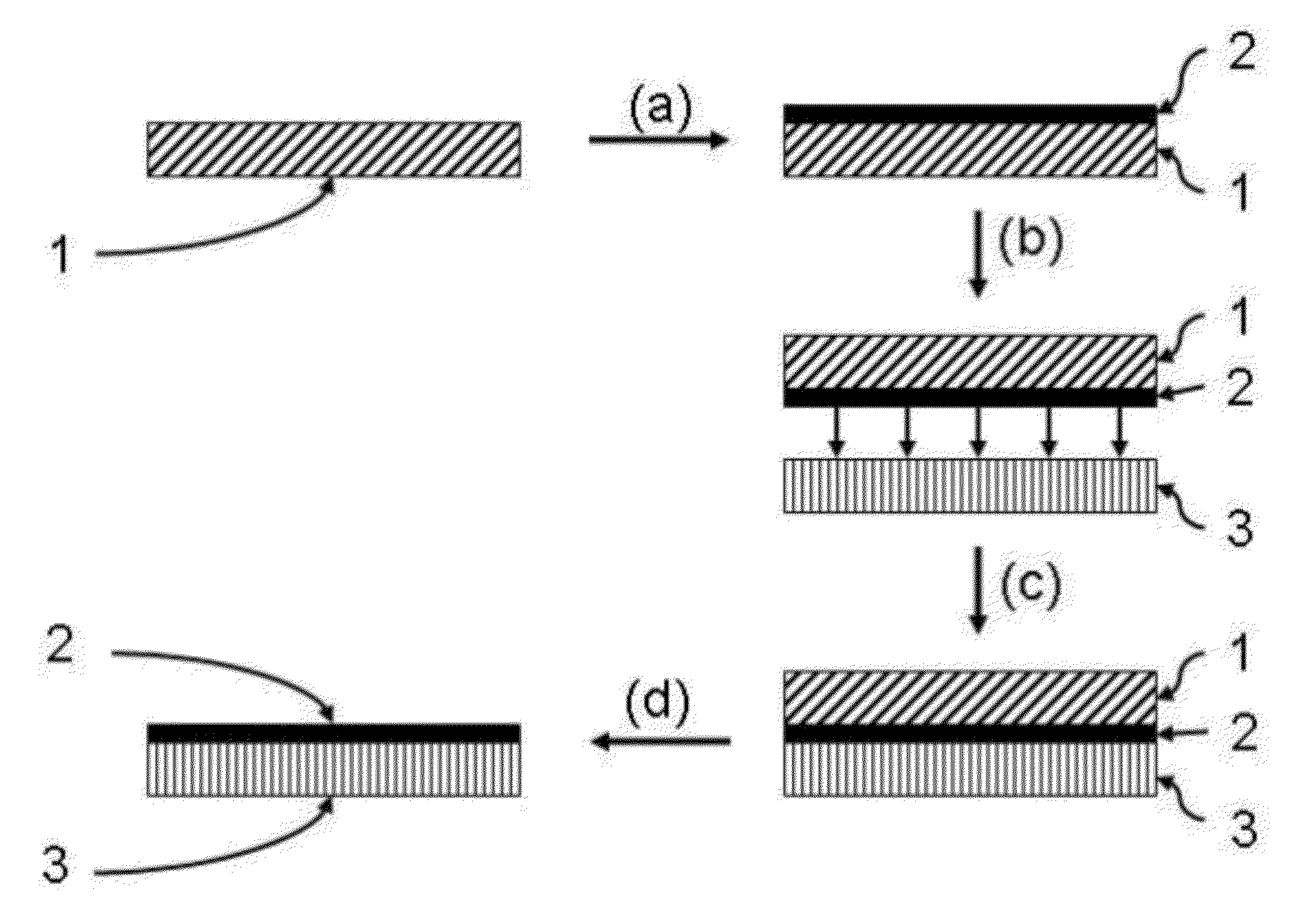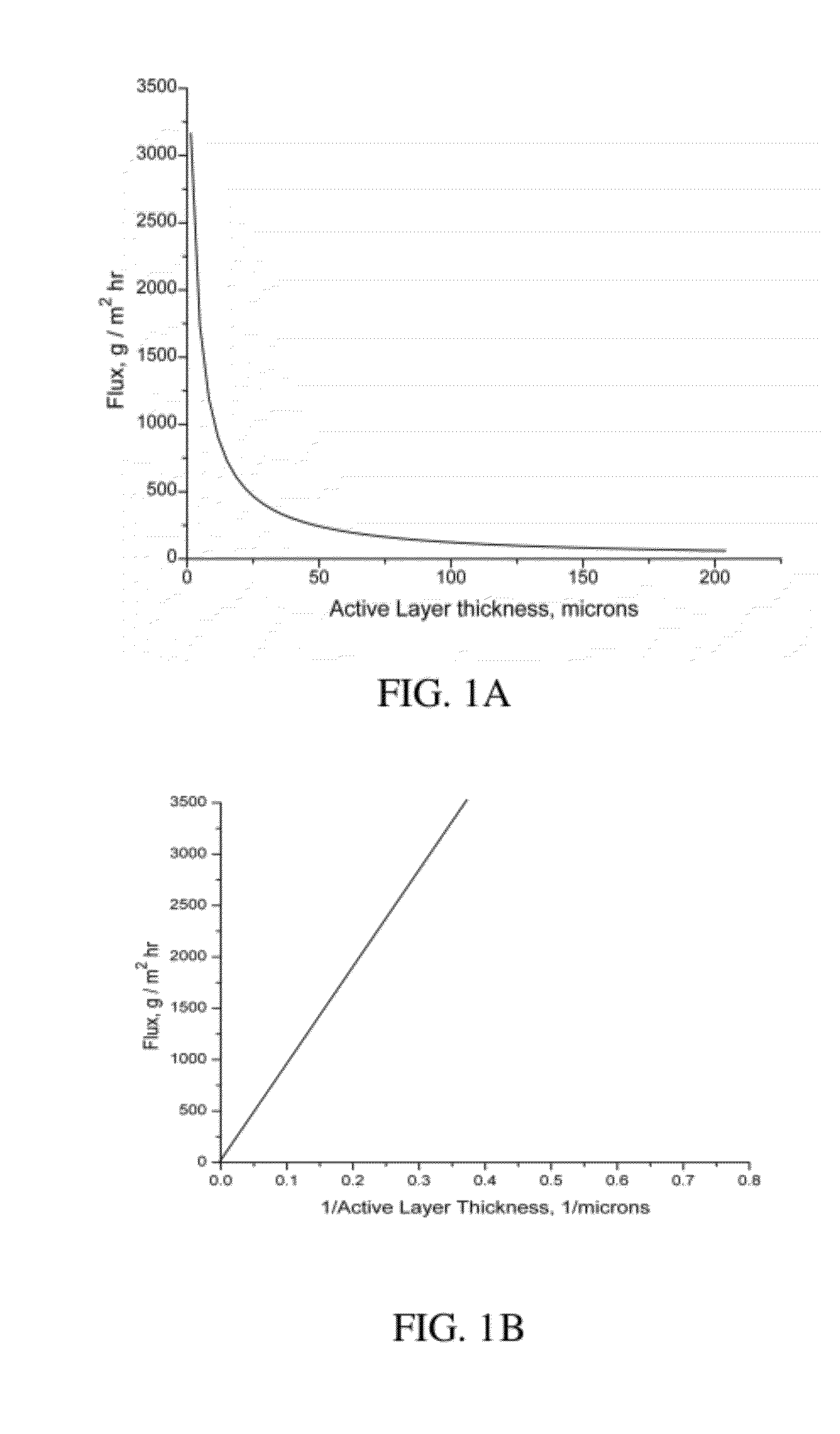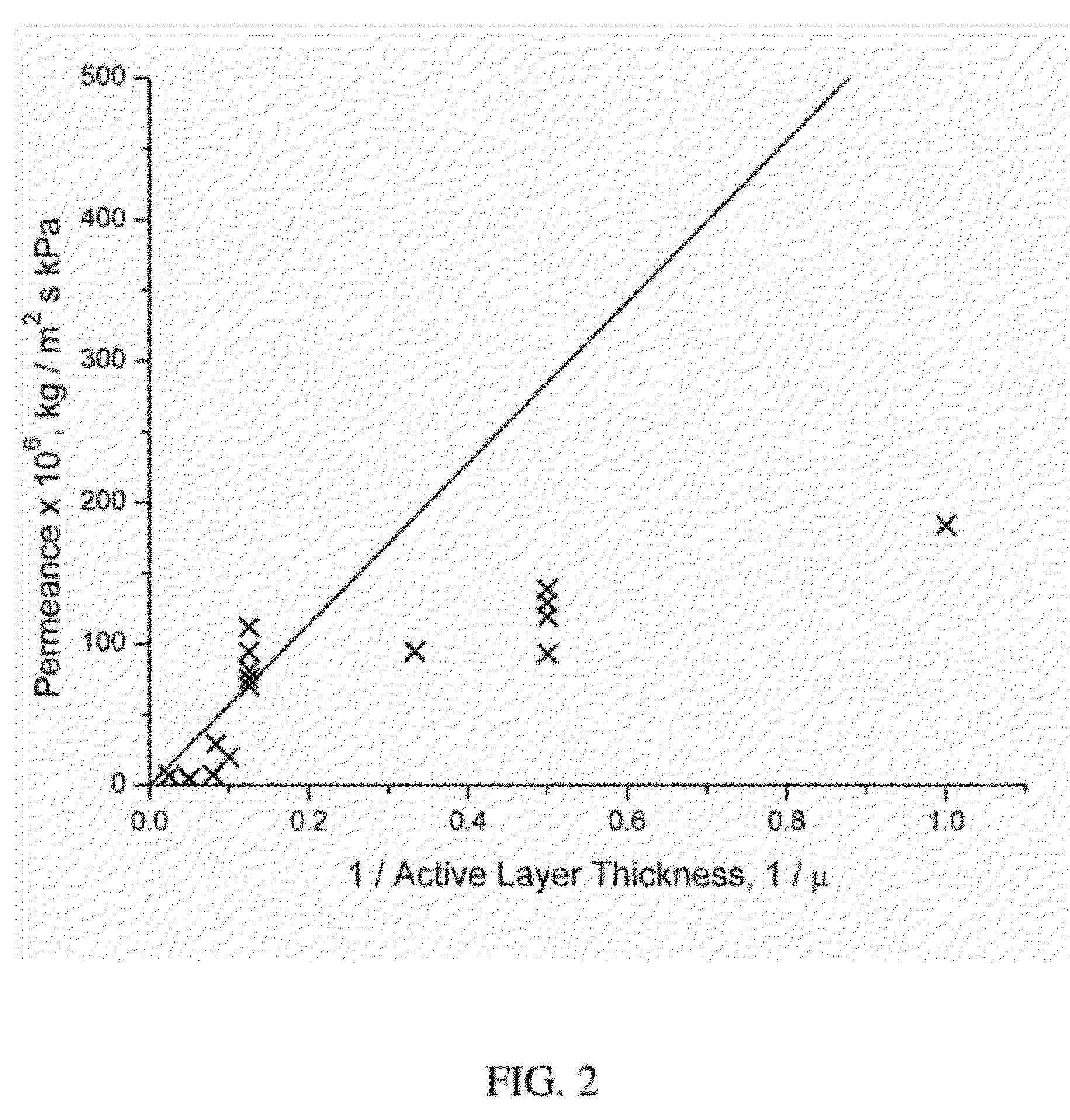Thin film composite membranes and their method of preparation and use
a composite membrane and thin film technology, applied in the direction of membranes, filtration separation, separation processes, etc., can solve the problems of coating mixtures that can penetrate the pores of coating mixtures and thin active layers are fragil
- Summary
- Abstract
- Description
- Claims
- Application Information
AI Technical Summary
Benefits of technology
Problems solved by technology
Method used
Image
Examples
example 1
20.5 Micron Poly(Dimethylsiloxane) Membrane Using a Poly(Vinylalcohol) Transfer Film, and a PES-20 Support Layer
[0064]Prepare Poly(Vinylalcohol) (PVA) Transfer Film:
[0065]Combine 80% hydrolyzed poly(vinyl alcohol) (Aldrich) with water to make a 4% solution by weight. Mix until are solids are dissolved. Cast 12.43 g of this solution into a 3.75″ diameter casting dish to make a 55 micron film after evaporating the water.
[0066]Prepare Poly(Dimethylsiloxane) (PDMS) Solution:
[0067]Combine 0.1367 g RTV615A (Momentive Performance Materials) and 4.1146 g isooctane in a vial. Add 0.0164 g RTV615B (cross-linker). Shake vial to mix. This amount of solution will make a 20.5 micron PDMS membrane in the casting dish.
[0068]Cast PDMS Solution on PVA Film:
[0069]In a vacuum oven, cast all the PDMS solution so as to wet the entire surface of the PVA film. Slowly pull vacuum on the oven to evaporate the isooctane over about one hour at room temperature, but not so rapidly as to boil the solvent. After ...
example 2
5.0 Micron PDMS Membrane Using a PVA Transfer Film with Glycerol Plasticizer, and a TF-450 Support Layer
[0071]Prepare Poly(Vinylalcohol) (PVA) Transfer Film with Glycerol Plasticizer:
[0072]Combine 80% hydrolyzed poly(vinyl alcohol) (Aldrich) with water to make a 4% solution by weight. Mix until are solids are dissolved. Combine glycerol and water to make a 10% solution. Mix 20.19 g 4% PVA solution and 0.85 g 10% glycerol solution. Cast 20.90 g of this mixture into a 11.4 mm×9.5 mm casting dish to make a 65 micron film after evaporating the water.
[0073]The remaining steps are the similar to those in example 1, except that a TF-450 (PTFE on polypropylene) microfiltration sheet membrane (Pall) is used for the support layer.
[0074]In a pervaporation test with a 5% ethanol feed at 50° C. and less than 2 torr permeate pressure, the resulting TFC membrane gave a separation factor of 8.55 and a flux of 2014 g / m2 hr.
example 3
5.0 Micron PDMS Membrane Using a PVA Transfer Film with PEG400 Plasticizer, and a PES-20 Support Layer
[0075]Prepare Poly(Vinylalcohol) (PVA) Transfer Film with Polyethylene Glycol 400 (PEG400, Fluka) Plasticizer:
[0076]Combine 80% hydrolyzed poly(vinyl alcohol) (Aldrich) with water to make a 4% solution by weight. Mix until are solids are dissolved. Combine PEG400 and water to make a 10% solution. Mix 13.70 g 4% PVA solution and 0.55 g 10% PEG400 solution. Cast 14.09 g of this mixture into a 3.75″ diameter casting dish to make a 66 micron film after evaporating the water.
[0077]The remaining steps are similar to those in example 1, using a PES-20 support layer. In a pervaporation test with a 5% ethanol feed at 50° C. and less than 2 torr permeate pressure, the resulting TFC membrane gave a separation factor of 6.12 and a flux of 1592 g / m2 hr. Comparison with example 2 shows that the more porous support layer, TF-450, gives higher separation factor and higher fluxes than the less porou...
PUM
| Property | Measurement | Unit |
|---|---|---|
| pore size | aaaaa | aaaaa |
| thickness | aaaaa | aaaaa |
| thickness | aaaaa | aaaaa |
Abstract
Description
Claims
Application Information
 Login to View More
Login to View More - R&D
- Intellectual Property
- Life Sciences
- Materials
- Tech Scout
- Unparalleled Data Quality
- Higher Quality Content
- 60% Fewer Hallucinations
Browse by: Latest US Patents, China's latest patents, Technical Efficacy Thesaurus, Application Domain, Technology Topic, Popular Technical Reports.
© 2025 PatSnap. All rights reserved.Legal|Privacy policy|Modern Slavery Act Transparency Statement|Sitemap|About US| Contact US: help@patsnap.com



